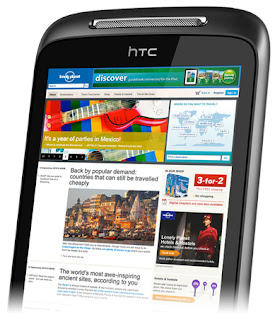Before Nokia announced that it was throwing in the towel on its own smartphone OS efforts and instead putting its faith in Microsoft’s fledging Window Phone 7 platform, HTC was perhaps Microsoft’s best buddy when it came to Windows Phone hardware. Along with the Trophy and HD7, the Mozart was one of three handsets that HTC introduced at the UK launch of Windows Phone 7.
Of these three, the Mozart is perhaps the most handsome. Today’s touchscreen phones tend to look quite slab-like simply due to the large size of their displays. However, the Mozart has beautifully rounded corners and curved edges. The dark grey metallic finish also looks the business and the three part approach to the rear of the phone, where the middle is made of metal with plastic cutaways at the top and bottom edges for the battery cover and camera surround, works really well.
In keeping with all the other Windows Phone handsets, there are three buttons at the bottom of the screen. The central Windows touch button acts as a Home key and this is flanked by Back and Search buttons. There’s also a lock button at the top of the phone, a volume rocker switch on the left and a camera button the right.
Like the Trophy, the Mozart has a 3.7in touchscreen with a resolution of 480 x 800 pixels, which is pretty much the standard for a handset in this price range. The screen uses standard LCD technology rather than OLED, but as with all Windows Phone 7 handsets it supports multi-touch. The screen is, on the whole, excellent as clarity is top-notch, viewing angles are good and colours are vibrant. However, black levels naturally aren’t as deep as you get on AMOLED displays and colours don’t look quite as rich.
HTC has used a speedy 1GHz Snapdragon QSD8250 processor and given the phone 576MB of RAM to strut its stuff with. The result is a handset that feels lightning quick to use and even offers up good graphics in 3D games like Glyder and Need For Speed Undercover. Naturally, it has the full armoury at its disposal when it comes to connectivity, with Wi-Fi and Bluetooth sitting alongside support for HSDPA at speeds of up to 7.2Mbps. The hefty processor and large screen do take their toll on battery life, however. For heavy usage, you’ll need to recharge it every day, but those who don’t make so much use of 3G web browsing or the GPS chip will get around two days from it.







 Posted in:
Posted in:
0 comments:
Post a Comment